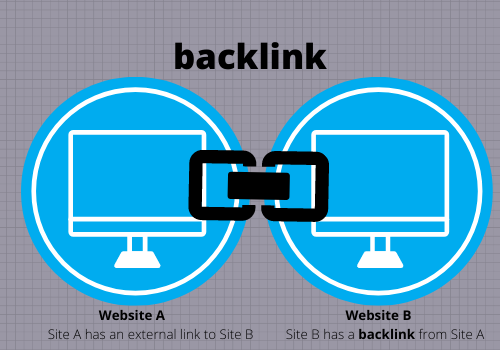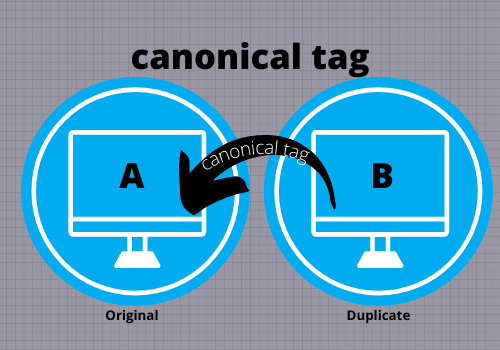Backlinks and canonical tags impact your SEO rankings within Google so they are two important things to understand. They both serve different purposes in regard to adding to your site’s overall ranking so it is best to consider each of them separately.
What is a backlink?
Someone once said, “All sources aren’t created equal.” They were talking about the value of a piece of writing. If you look for information on a medical condition, would you consider the most valuable information that of a medical doctor, or from me, writing about my problem and how I solved it using my own remedies? The most reliable source would naturally be the doctor. That person has gone through training and has a lot more knowledge and experience than I do. That means a doctor is a stronger source.
It is valuable to keep that in mind, because a backlink is a link from one web page to another. And a backlink is usually created to link to information or a source for your copy, for example.
A backlink can also go the other way. You might have an article on your website that other people find value in, so they link to that. The key is that there has been a link created from their website to yours.
Backlinks make your website more discoverable. That doesn’t mean that you should go and add backlinks to every sentence you write, but do consider visiting older pages and looking for relevant material to link to.

Things to consider when creating backlinks.
As has already been explained, it is valuable to consider the quality of the link you are making. Google will look at the site you are linked to and ask whether it is a credible source for the topic you are linking to. For example, the link in this paragraph goes to a site that has a high-quality article on backlinks.
And not only is the article of high quality, but the site itself is seen as an authority on Search Engine Optimization (SEO). And backlinks are part of a strong SEO strategy. So, the lined-to site is regarded as authoritative. It’s a bit like the earlier reference to information from a doctor versus a member of the public. That strong backlink gives your site more credibility.
The placement of your backlink also impacts your ranking with Google. Creating a backlink that is in the main body of your webpage and stands out, both with color and also a different font, might work better because visitors to your page will click on it more often.
How do backlinks impact your Google ranking?
Backlinks are a vote of confidence to say that your information is valuable to others. Unfortunately, the opposite can be true in that linking to a less desirable site can hurt your Google ranking. Google trends analyst Neil Patel has a video on his website that explains how links can hurt your website ranking. (See what I did there? I just added a strong backlink to a highly reputable website.)
It is also important to consider that what you are writing about on your website needs to be valuable to others; providing backlinks should strengthen that.
If your website is fairly new or has new content, it takes time for Google to recognize it and start to consider the value of that information compared to the other sites already out there. With this in mind, it is always valuable to be creating new backlinks so Google can continue to see your site as adding value to people searching for the content you provide.
What is a canonical tag?
Moz explains it this way:
A canonical tag (aka “rel canonical”) is a way of telling search engines that a specific URL represents the master copy of a page. Using the canonical tag prevents problems caused by identical or “duplicate” content appearing on multiple URLs. Practically speaking, the canonical tag tells search engines which version of a URL you want to appear in search results.
A canonical tag helps search engines understand which page is THE page to be indexed for your site. For your website, each of your pages has a different URL. Sometimes, through no fault of ours, those URLs are remarkably similar. While that doesn’t mean anything to us, it does mean that the web crawlers doing the work of determining which page to rank may choose the page that is not necessarily the best to crawl and rank.
That is why using the canonical tag is valuable. It lets the web crawler know which page is considered the most important to gather your SEO information from.

Here’s how to create a canonical tag.
To create a canonical tag, you must use html code and place that code in the <head> section of the webpage you want to be considered the main page for indexing.
The line of code includes two things:
First, the ‘link rel=”canonical”’ piece which basically explains to the search engines that this is the main page.
The second part of the reference ‘href=”https://example.com/sample-page.html/” which is the page reference that you want to be flagged as the master page.
All together it would look like this ‘link rel=”canonical” href=”https://example.com/sample-page.html/”
Why it is important to check for canonical tags.
It is important to check for canonical tags to make sure your most valuable pages are the ones being seen. Remember that if you have what the web crawler sees as a page that it considers important, it will crawl that and reference it in search results.
That page may not be the most valuable content on your website, though, so add in canonical tags to the key pages you have on your site to get the best possible ranking for your pages.
The overall value of backlinks and canonical tags.
Both backlinks and canonical tags add value to your website ranking because they help Google or the other search engines consider your pages as high quality.
Backlinks provide authority and support for your content as being valuable to others. Canonical tags help to pinpoint your quality content and make the web crawlers’ job easier by identifying that content using the tag.
The other big benefit of canonical tags is when you have duplicate pieces of content on different sites. The canonical tag allows you to let the search engines know where your main piece of content is.
Remember that all it takes is one quality page on your site that has high SEO value to drive more visitors to your website.
